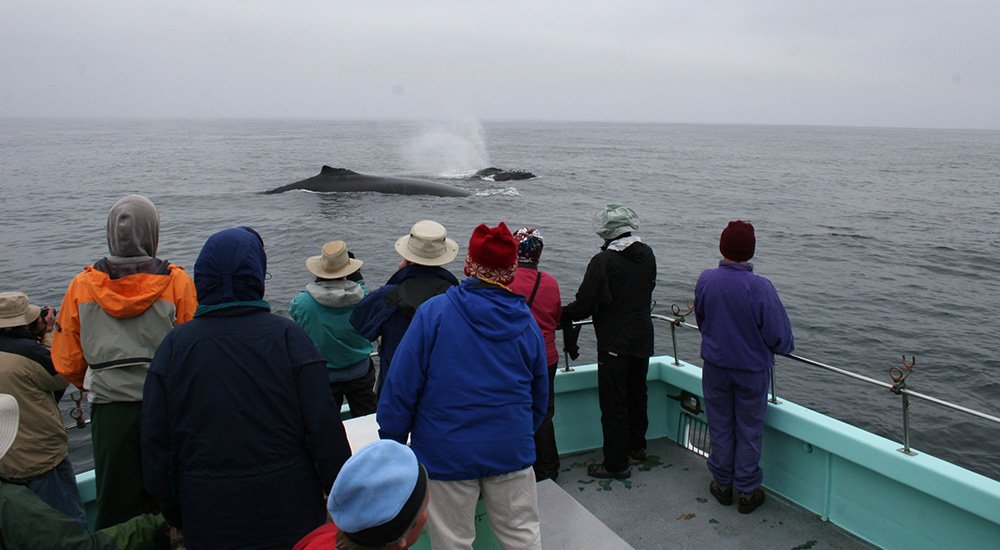Responsible Recreation Viewing Guidelines

Whale Conservation and You
Wildlife watching in nearshore and offshore waters throughout the sanctuaries is a unique way to experience whales in their habitat and witness their size, behavior, and sounds. A few operators in the Bay Area lead seasonal tours, and the sanctuaries offer occasional cruises to Cordell Bank and the Farallon Islands. When booking, be sure to ask if an operator follows the federal guidelines for approaching whales. Just by asking, you are encouraging skippers to operate their vessels respectfully and responsibly around whales and other wildlife.
When on the water, boating, surfing, snorkeling, or enjoying board sports, you can help whales by giving them plenty of distance, should you encounter them. Never attempt to engage in contact with a whale; federal laws protect them, and your well-intended action could result in harassment. Vessels of any type, including sport boards, fall under specific NMFS guidelines for operation around whales. While recreating in sanctuaries it is advised to use these wildlife viewing guidelines. NOAA generally advises not approaching whales closer than 300 ft. (the length of a football field).
Through its Sanctuary Naturalist Corps training, Greater Farallones National Marine Sanctuary trains field educators in responsible whale and wildlife watching "etiquette" and equips them with information about their natural history and the sanctuary ecosystem to share with whale enthusiasts.
If you go offshore, you can help contribute your sightings via the Whale Alert app and support citizen science efforts to better understand whale locations and potential threats to whales.
How You Can Help
Keep Your Distance
Be responsible when viewing marine life in the wild. Observe all larger whales from a safe distance of at least 100 yards by sea or land.
In Hawaiߵi and Alaska, it is illegal to approach a humpback whale within 100 yards, by land or sea. It is also illegal to approach humpback whales in Hawaiߵi within 1,000 feet (333 yards) by air.
Report Marine Life in Distress
Report a sick, injured, entangled, stranded, or dead animal to make sure professional responders and scientists know about it and can take appropriate action. Numerous organizations around the country are trained and ready to respond. Never approach or try to save an injured or entangled animal yourself-it can be dangerous to both the animal and you.
Learn who you should contact when you encounter a stranded or injured marine animal
Reduce Speed and Be on the Lookout
Collisions with vessels are a major cause of injury and death for whales. Here are some tips to avoid collisions:
Keep a sharp lookout. Look for blows, dorsal fins, tail flukes, etc.
Watch your speed in areas of known marine mammal occurrence. Keep speeds to 10 knots or less to reduce potential for injury.
Keep your distance. Stay at least 100 yards away.
Stop immediately if within 100 yards. Slowly distance your vessel from the whale.
Report a Violation
Call the NOAA Fisheries Enforcement Hotline at (800) 853-1964 to report a federal marine resource violation. This hotline is available 24 hours a day, 7 days a week for anyone in the United States.
You may also contact your closest NOAA Office of Law Enforcement field office during regular business hours.

